Article
Tenakee (Alaska) Springs Eternal
Author(s):
In the fourth in a series on the many wonders of small ship cruising through South East Alaska, our travel columnists visit the tiny village of Tenakee Springs.
In the fourth in a series on small ship cruising, our travel columnists visit Tenakee Springs, Alaska. Photography by the authors.
Some cities are so vast you’re aware you’ll never get to know them. On the other hand, there are places like the little town in Vermont that a friend of ours from New York City visited. He stepped out of the country inn, walked around the block, came back in and said to the receptionist, “I got lost. I was looking for downtown.”
She smiled and said, “You just walked it.”
Then there are really little places like Tenakee Springs in South East Alaska and a population of under 100. The only access is by sea. No cars, no traffic lights, but a sign says: “Speed limit 10 MPH.” There are other signs, some tongue-in-cheek.
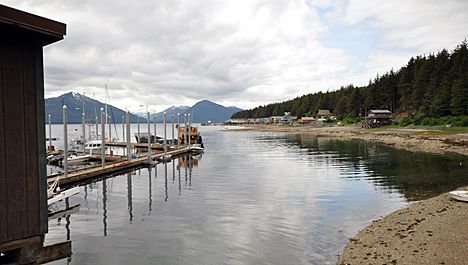
An old chart labels the town “Brown Bear Area.” A bit spooky for city slickers (as most of us on the Island Spirit are) though perhaps that’s less scary for landlubbers than chart notations, “Here be sea monsters.”
The American Indian name for the town means: “The bay on the other side.” This was a fishing village for the natives, but according to their stories the village was destroyed by a pet beaver! Their history tells there was once a disastrous flood, but the Indians survived by climbing the 3,870-ft.-high mountain that rises behind the village. They saw the peak, evidently, as a weather barometer, since the clouds above it confirmed the winds’ directions.
The navigation charts show entries that strangers coming here built a packing station, but that burned down in 1892. A salt mine and a fox farm similarly failed. The charts list nearby pictographs that depict early battles “leaving the defeated people decapitated with blood running over the rocks,” and similarly locate nearby Indian villages as where “the rock fell on somebody’s head.” And the explanation lies at the bottom of the map: A man killed his wife’s lover by rolling a rock off the cliff on to the offender’s head.
Yes, these were dangerous times. We notice we are sailing near Pogibshi Point, the words in Russian meaning “Peril Point.”

We amble from the town dock where Captain Jeff has parked his ship up the rather pretty road into town. The houses are simple enough, but their modest gardens are bursting with flowers. Children pass on bicycles and one little girl as a passenger on a tractor. There is a sense of serenity here that isn’t disturbed even when we notice the satellite-television dishes. The gardens are gorgeous, we say to a couple who tell us they sail down from Juneau most weekends in their yacht.
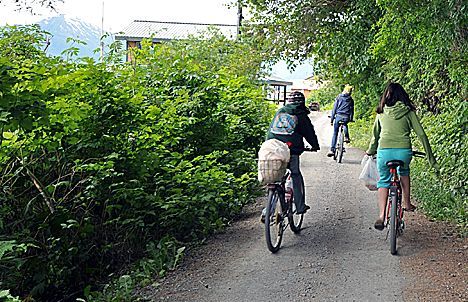
“Soil is at a premium here,” they tell us, pointing at all the canisters serving as flower pots. “There was once a ferocious argument here with a woman complaining someone had stolen her dirt!” These weekenders are proud to be occasional residents of this village. The modern well-equipped school has 10 students, all benefiting from the state largese coming from Alaska’s oil. “A kindergarten student and a high school senior both graduated last year and the school threw an elaborate graduation ceremony for both complete with cap and gown.”
We wander on. The houses surely show their personalities from ones that look like log cabins to gaily painted ones resembling East Coast beach homes.
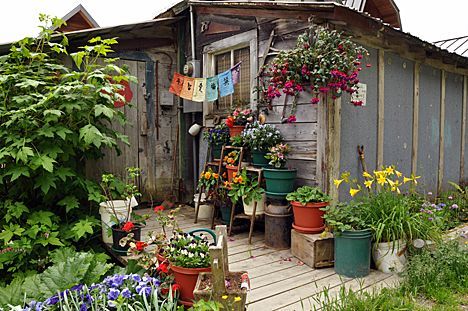
The community got a general store in 1899 and a post office in 1902. “All roads lead to Rome” the saying goes but, in a village, all roads lead to the country store and, in this case, also to the bakery next door -- which turns out to be on the national historic list.
What’s the deal with bakeries? Why are so many in the United States on that similar list? Did the pioneers have a thing for donuts? Is the list voted on by police officers? We know bakeries in Lititz, Pennsylvania; Houston, Texas; and Jeanerette, Louisiana have all been so honored. Perhaps readers know of others.
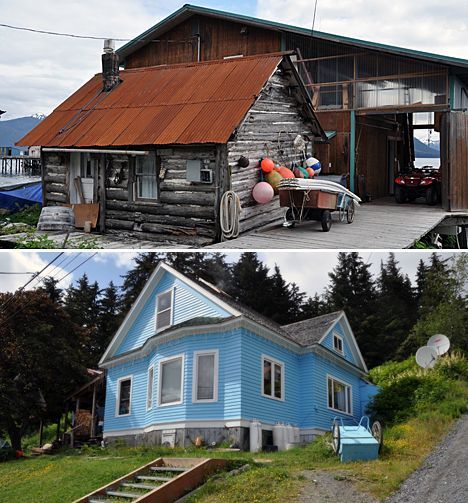
Today the bakery opened as a courtesy to our captain. He has reminded us not to be intrusive with the reserved residents of little Tenakee, but we found them amiable and welcoming. (And careless with their bicycles, which lay scattered all over town.) Perhaps crime is not common when everyone knows everyone.

Or maybe such a compact community believes in sharing, so theft is not a problem. The “bus stop” opposite the country store is a village inside joke, although the sign that says, “Free TV. See Rosie Green” is genuine. The tease is there are no vehicles in town and the small building is actually a Goodwill station, where residents go to exchange reading material or clothing or CDs. So when they sit in their small church on Sundays, they probably recognize the boots a resident is wearing just as they reflect on what, for them, must be the creation of a completely perfect, untroubled existence.
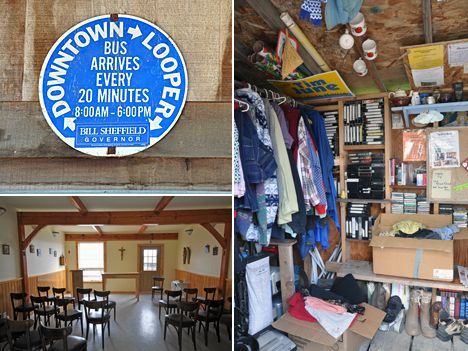
The Andersons, who live in San Diego, are the resident travel & cruise columnists for Physician's Money Digest. Nancy is a former nursing educator, Eric a retired MD. The one-time president of the New Hampshire Academy of Family Practice, Eric is the only physician in the American Society of Travel Writers. He has also written five books, the last called The Man Who Cried Orange: Stories from a Doctor's Life.




